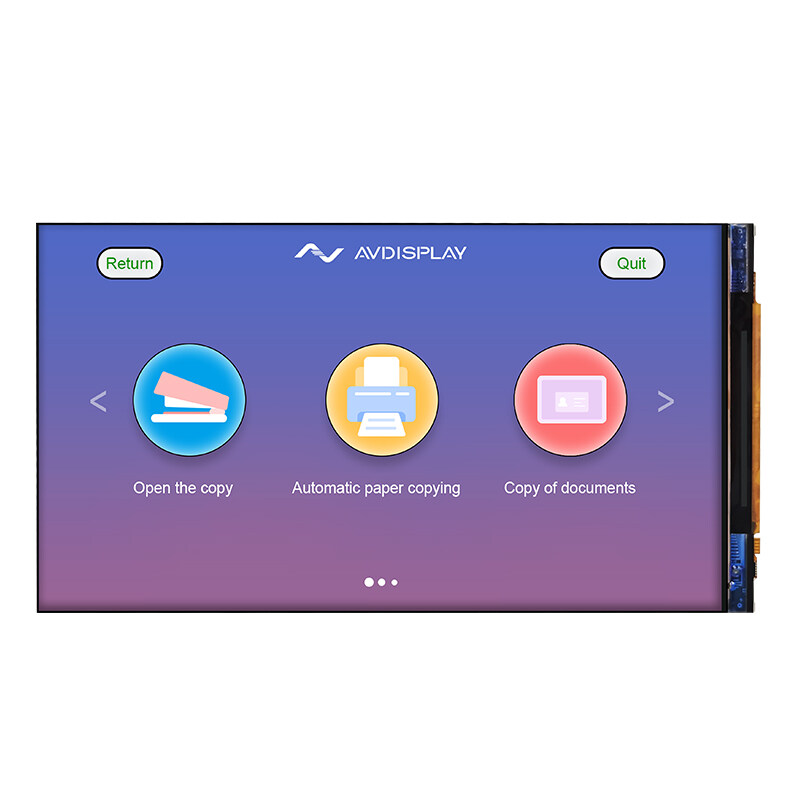Email format error
Email cannot be empty
Email already exists
6-20 characters(letters plus numbers only)
The password is inconsistent
Email format error
Email cannot be empty
Email does not exist
6-20 characters(letters plus numbers only)
The password is inconsistent


In the digital age, our eyes have become the windows to our work, entertainment, and communication. The TFT (Thin Film Transistor) LCD screens that dominate our devices are the glass panes through which we interact with the world. But have you ever considered how the size and resolution of these screens can affect your viewing comfort and productivity? In this blog post, we'll delve into the science and art behind finding the perfect TFT LCD screen for your needs.
The size of a TFT LCD screen is a critical factor in viewing comfort. Too small, and you may find yourself squinting to read text or navigate interfaces. Too large, and you might experience eye strain from constantly shifting your gaze across the screen. The ideal screen size depends on the distance between your eyes and the screen, as well as the type of work you do.
Resolution is the number of pixels that make up the image on the screen. A higher resolution means more pixels, which translates to a sharper, more detailed image. For tasks that require precision, like graphic design or photo editing, a high-resolution screen is essential. However, for general use, a balance between resolution and screen size is key to avoid unnecessary strain on your eyes.
Pixel density, measured in pixels per inch (PPI), is the detail that your screen can display. A higher PPI means a sharper image, but it also means that your eyes have to work harder to distinguish between pixels. This can lead to eye strain if the PPI is too high for the screen size. The 'Retina' display standard by Apple is an example of a screen with a PPI high enough that the human eye cannot discern individual pixels at a normal viewing distance.
The aspect ratio of a TFT LCD screen determines its shape. Traditionally, screens have a 4:3 aspect ratio, but modern screens often use a 16:9 or 16:10 ratio, which is closer to the widescreen format of movies and provides more space for multitasking. The right aspect ratio can enhance your viewing experience and productivity, depending on your usage patterns.
TFT LCD screens with wide viewing angles allow you to see the screen clearly from different positions, which is particularly useful in collaborative environments or when you're not directly facing the screen. This can reduce neck and eye strain by allowing you to maintain a comfortable posture.
The refresh rate of a screen is the number of times the image is updated per second. A higher refresh rate can reduce motion blur, which is especially important for gaming or watching fast-paced videos. However, for general use, a standard 60Hz refresh rate is sufficient and can help reduce eye strain by providing a balance between smooth motion and visual comfort.
Blue light emitted by screens can interfere with your sleep patterns and cause eye strain. Many TFT LCD screens now come with features that reduce blue light emission, which can help protect your eyes and improve your overall comfort during long hours of use.
A screen that allows for height, tilt, and swivel adjustments can be a game-changer for your posture and comfort. Ensuring that your screen is at the right height and angle can reduce the risk of neck and back pain, as well as eye strain.
Choosing the right TFT LCD screen size and resolution is about more than just the numbers; it's about finding a balance that enhances your viewing comfort and productivity. By considering factors like pixel density, aspect ratio, viewing angles, refresh rate, and blue light emission, you can select a screen that not only meets your needs but also contributes to a healthier, more enjoyable digital experience.
Ready to upgrade your display? Explore our range of TFT LCD screens and find the one that will take your comfort and productivity to the next level.